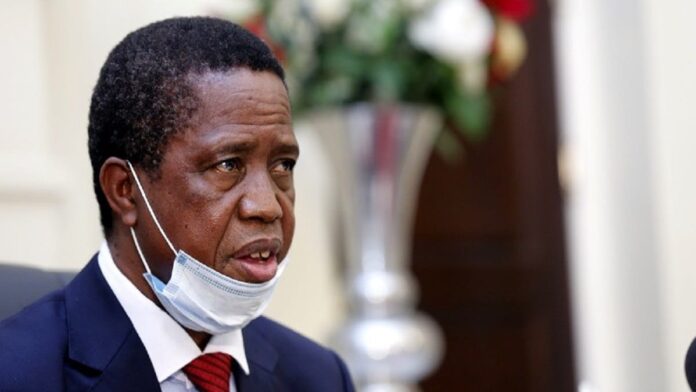Eyes on Zambia: Eurobond Default Sends Bad Signal, IIF Advised Changes to Policy Mix
Zambia recent Eurobond default signposts that there are trouble ahead amidst low foreign direct inflow into the economy and weak currency. Despite weak revenue accretion, there is substantial Eurobond exposures in bilateral deals with Bank of China up till 2027.
It is not clear, however, how Zambia will survive this humongous debt loads amidst weak revenue position. In its recent macroeconomic note, the Institute of International Finance identified persistent depreciation in Zambia’s local currency, Kwacha, as the key driver of Zambia’s unsustainable government debt.
The Institute also explained that a change in these dynamics will not be possible without the right policy mix. Recall that Zambia opted to default on a Eurobond coupon payment of $42.5 million after the expiration of the grace period on November 13.
In its latest review, IIF looks more closely at the needed policy adjustments in the context of external and domestic financing needs.
“While the current account has shifted to a surplus in recent quarters as a result of import compression, upcoming amortization of external debt—including the scheduled repayment of Eurobonds worth $3 billion—creates substantial financing needs”, IIF stated.
At the same time, the Institute noted that budget deficits are expected to widen sharply as a result of COVID-19 and are being financed, in the absence of non-resident inflows, by the Bank of Zambia.
“This has exacerbated existing inflationary pressures and contributed to significant ZMW depreciation. We believe that meaningful fiscal adjustment and monetary tightening will be critical to addressing Zambia’s mounting external and domestic imbalance,” experts explained.
Zambia’s current account has shifted to surplus in recent quarters, thereby reducing pressure on external financing. In the first half of 2020, the surplus reached 7.2% of gross domestic products (GDP), largely as a result of a 6 percentage point upward shift in the goods surplus compared to first half of 2019 while other components remained broadly unchanged.
Also contributing was a steep decline of nominal GDP in dollar terms. IIF stated that these adjustments in the first half of 2020 took place in the context of falling prices as well as export volumes for Zambia’s primary export, copper, which by itself would have led to a deterioration.
However, this has been more than offset by persistent import compression due to significant ZMW depreciation and sharply slower growth. In fact, IIF reckoned that the country’s real GDP growth slowed from a 3.6% average over 2015–18 to 1.4% in 2019.
Also, output level declined by 1.2% in the first half of 2020. “Due to the rebound in copper prices (50% since the trough in March) and persistent ZMW weakness, we expect the current account to remain in positive territory for the remainder of the year”, IIF projected.
The Institute however observed that pressure from the current account side may, thus, be lower, but rising amortization of public and publicly guaranteed debt presents a challenge in coming years.
In addition to substantial repayments to bilateral creditors, in particular the Export-Import Bank of China, Zambia’s three outstanding Eurobonds amortize in 2022 ($750 mn), 2024 ($1 bn), and 2025-27 ($1.25 bn).
IIF said in addition to external financing needs, Zambia is also facing larger central government fiscal deficits in coming years.
Read Also: Chapel Hill Denham Advised Investors to Buy UACN Shares for 94% Upside
“While the overall balance had been deteriorating due to rising interest payments, the COVID-19 shock will, in our estimate, widen the deficit to above 14% of GDP in 2020”, IIF stated.
The Institute also noted that the deficit is not expected to return to its 2019 level of 8.5% until 2023 and, in the absence of debt service relief, this would require the primary deficit decrease to below 1% of GDP.
Zambia’s challenges are exacerbated by a decline in non-resident capital inflows, likely the result of the country’s weakening economic prospects (in the case of FDI) as well as deteriorating market sentiment towards Zambian assets (in the case of portfolio investment).
Expert detailed that growing fiscal deficits have been financed by the Bank of Zambia and, to a lesser extent, the domestic financial system.
However, IIF explained that such fiscal dominance has led to a sharp increase in inflation (16.1% year in year in October) and persistent ZMW depreciation (40% over 2018-19 and 45% year-to-date in 2020) against the backdrop of broad money growth above 40%.
IIF said that the right policy mix will be needed to address Zambia’s substantial imbalances.
The Institute stated that this will include meaningful fiscal consolidation, which should reduce the reliance on monetary financing and thus relieve inflationary pressure. Especially against the backdrop of continued lukewarm domestic demand.
“In all likelihood, fiscal tightening may need to be accompanied by interest rate hikes, following the BoZ’s cumulative 350 bps cuts earlier this year to 8%.
“Higher rates would also help reduce pressure on the ZMW”, experts noted. IIF added that the nation’s upcoming general election in August 2021 complicates any progress, however. Incumbent president Edgar Lungo (Patriotic Front) came to power in 2015 as a result of a by-election following the death of Michael Sata.
He was elected for a full term in 2016, narrowly defeating UPND leader Hakainde Hichilema. The election result reflects Zambia’s growing partisan split along regional lines. “Substantial policy adjustments may only be possible within the conditionality framework of a multi-year IMF program.
“While we do not believe such an agreement to be likely before the 2021 general election, it will be critical to address Zambia’s mounting external and domestic imbalances and to reset government debt to a sustainable trajectory over the medium term”, IIF explained.
Nigeria’s Big Banks Withstand 40% Oil Exposure Stress Test > Eyes on Zambia: Eurobond Default Sends Bad Signal, IIF Advised Changes to Policy Mix












